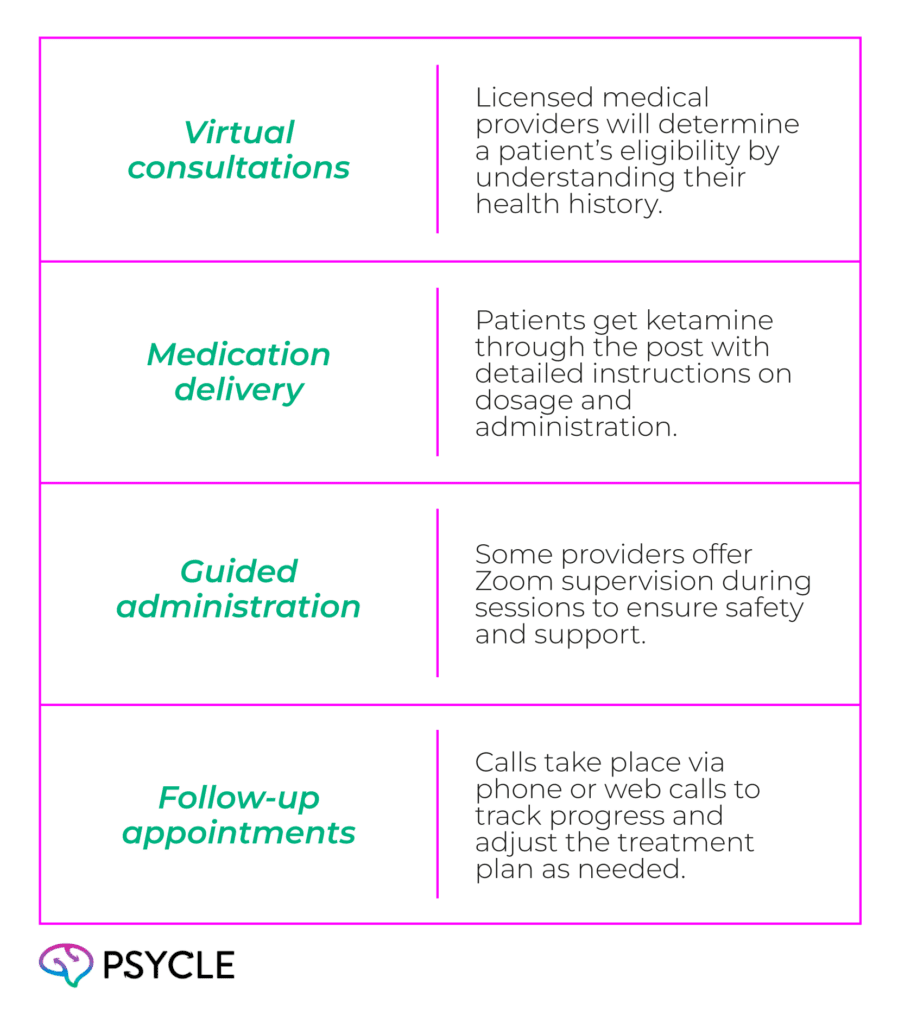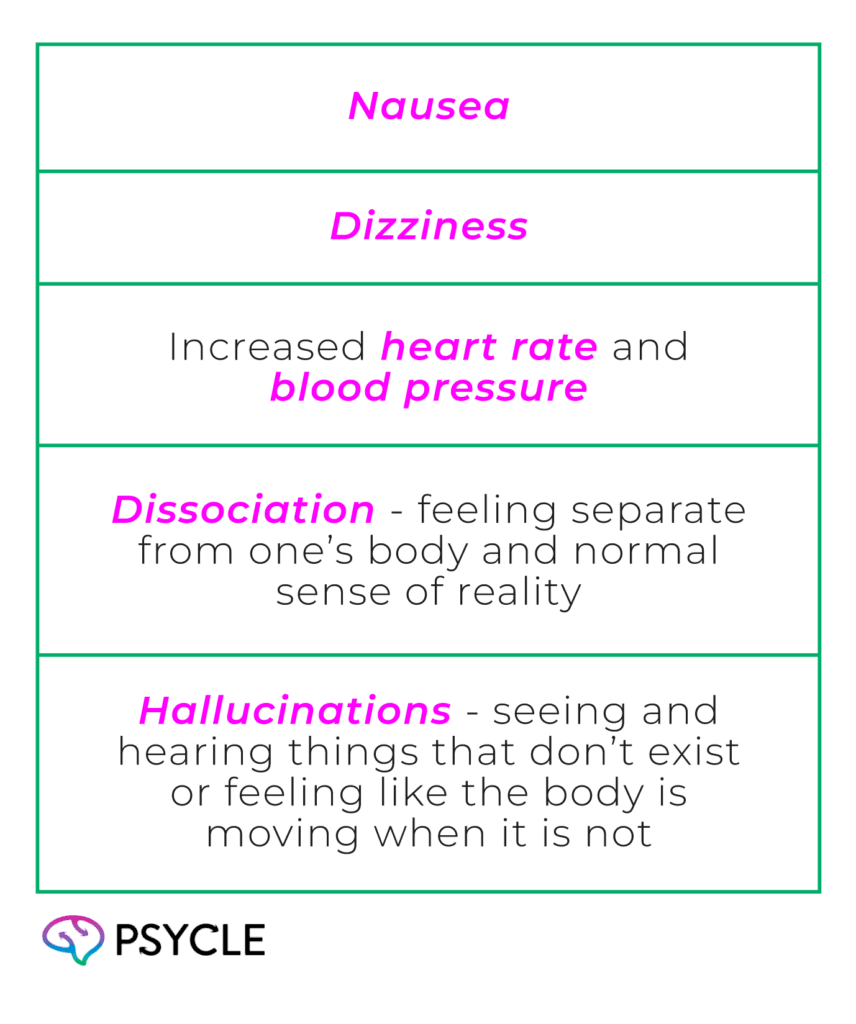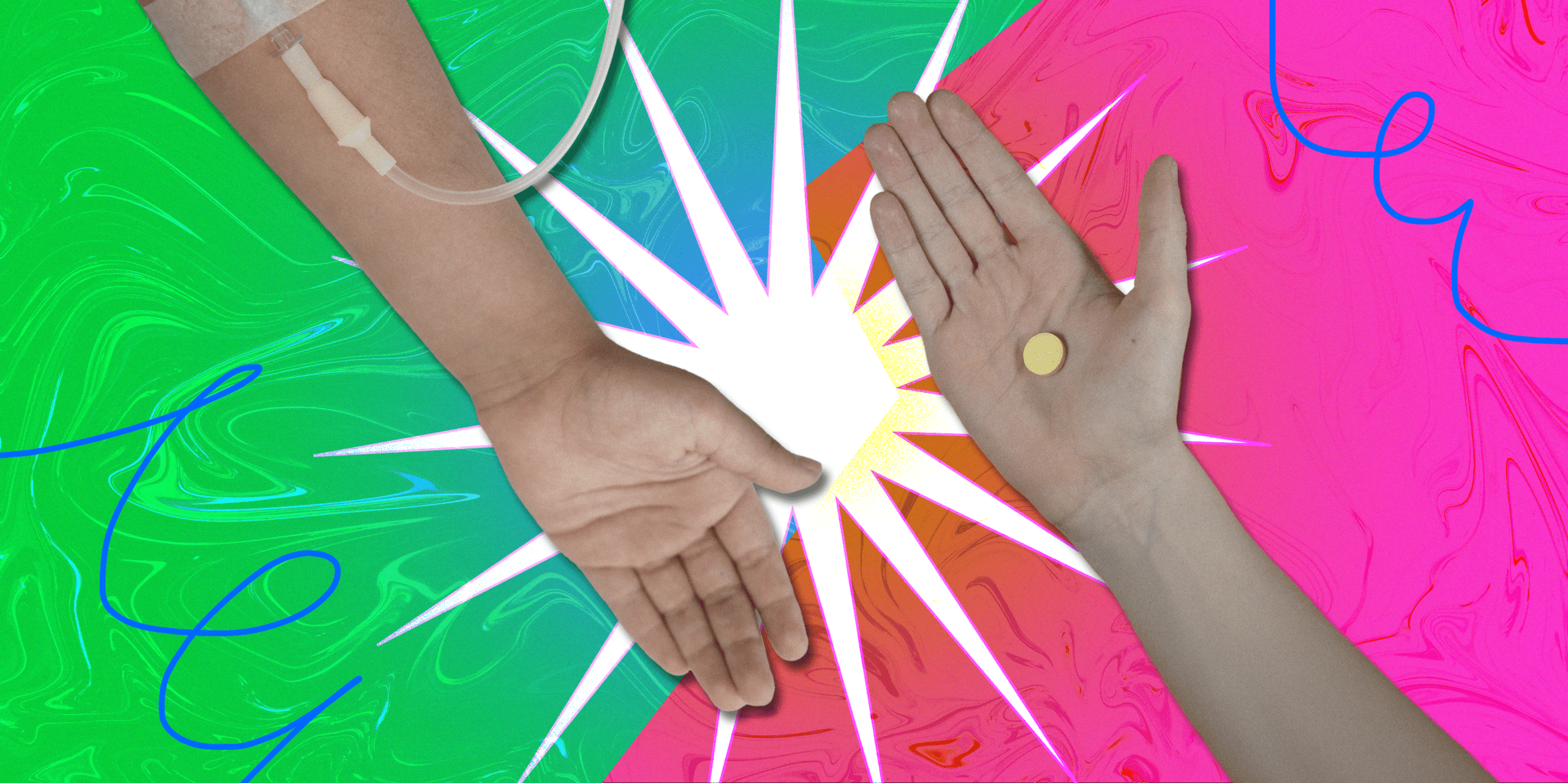Disclaimer: This article contains affiliate links. If you purchase through these links, Psycle Health may earn a commission at no additional cost to you. This helps support our work and allows us to continue providing valuable content. Thank you for your support.
With the growing availability of at-home ketamine therapy, individuals now have the option to use this powerful treatment from the comfort of their homes. A recent development includes injectables, where patients administer ketamine under the skin.
This article will compare injectable ketamine with the more commonly used oral tablets and lozenges, exploring their key differences and potential risks when it comes to treating mental health.
Key Takeaways
- Oral ketamine is more common but has lower absorption and less predictable effects.
- Injectable ketamine is stronger and more effective but comes with a higher risk of addiction and more intense side effects.
- Bioavailability plays a crucial role in how well ketamine works—oral forms are less potent due to liver metabolism, while injectable forms offer rapid and powerful results.
- At-home ketamine lacks direct medical supervision, making safety precautions essential.
- Choosing a high-quality provider and having support in place can make treatment safer and more effective.
Understanding At-Home Ketamine Therapy
With the rise of telehealth, ketamine therapy is now widely available for at-home use. This remote care allows people to use ketamine in the comfort of their homes, making it a convenient option for those who have difficulty accessing in-person services. Mindbloom, Nue Life, and Joyous are some of the leading telehealth providers in the US.
At-home ketamine treatment typically involves:

There are many benefits to at-home ketamine. Telehealth is more physically accessible, often more affordable, and allows for greater flexibility. Some people may therapeutically benefit from an at-home environment, especially if they struggle with agoraphobia.
However, at-home ketamine also comes with risks. Ketamine can have adverse reactions, and the lack of immediate medical supervision can exacerbate problems linked to these side effects. In the rare case of complications, this also means delays in emergency interventions.
Want to try ketamine therapy? Head over to BetterU and get $50 off with Psycle50 at checkout.

Oral, Intranasal, or Injectable? Understanding Your Options
Oral Ketamine
This is the most common form of at-home ketamine, typically coming as dissolvable lozenges or tablets placed under the tongue. The medication is absorbed through the mucous membranes in the mouth, but a significant portion is swallowed and processed through the digestive system. As a result, it takes about 20-30 minutes to start working, with effects building gradually.
Intranasal Ketamine
This method is used by some telehealth services but is relatively uncommon. Patients spray ketamine directly into the nostrils, where it is absorbed through the thin mucous membranes of the nasal cavity. Since it bypasses the digestive system, it takes effect within 10-15 minutes—faster than oral ketamine but still slower and less predictable than an injection.
Injectable Ketamine
Injectable ketamine is a relatively new form of at-home ketamine use, being offered by only a couple of clinics, including the leading provider Mindbloom. Ketamine is provided as a subcutaneous (under-the-skin) injection. Since the medication is absorbed directly into the bloodstream, it produces rapid effects within 5-10 minutes. This method provides a more consistent and potent response than oral or intranasal administration.
Ketamine Absorption: Why Bioavailability Matters
One of the key differences between oral and injectable ketamine is bioavailability, or how much of the drug enters the bloodstream.
- Oral ketamine has a bioavailability of around 23-32%, meaning a significant portion of the dose is lost as it is metabolized by the liver. This can lead to variable effects and necessitates higher doses to achieve therapeutic benefits.
- Intranasal ketamine has a bioavailability of around 45-50%, offering a middle ground between oral and injectable forms. While more efficient than oral ketamine, the absorption can still be inconsistent.
- Injectable ketamine has a bioavailability of around 64%, although there is very limited bioavailability data. This results in a faster, more intense effect and allows for lower doses to achieve therapeutic outcomes.
Comparing Benefits and Risks: Oral vs. Injectable Ketamine
Oral ketamine offers a gentler onset and longer-lasting effects, making it a popular option for at-home use. However, its lower bioavailability means that it may not be as effective for individuals with severe depression or those who have developed a tolerance.
Injectable ketamine, on the other hand, provides a more potent and rapid effect, making it closer to the treatments offered in clinical settings. However, this also means injectable ketamine has an increased risk of side effects, which include:

Another important point to consider is the addictive potential of ketamine. Ketamine is a drug of abuse that affects the brain’s reward pathways and, for some people, has pleasurable effects. The risk of addiction is higher with at-home injectables because these effects are stronger.
Staying Safe with At-Home Ketamine: Essential Guidelines
At-home ketamine is less controlled than in-clinic administration, so safety precautions are crucial. Here’s how to reduce risks:
- Choose a reputable provider with strong medical oversight and positive patient reviews to ensure quality care.
- Ensure a thorough screening process to assess mental and physical health before treatment, reducing the risk of adverse effects.
- Have a trusted support system—whether a therapist, friend, or trip-sitter—present during sessions for added safety and emotional support.
- Understand integration, which is the process of making sense of ketamine experiences and applying insights from the therapy to daily life.
- Follow dosage instructions carefully, as improper dosing can lead to dangerous side effects.
- Avoid mixing with other substances, especially alcohol or sedatives, as they can heighten risks and lead to dangerous interactions.
- Prepare a safe environment by ensuring a quiet, comfortable space free from potential hazards in case of dizziness or dissociation.
FAQs
Who is Eligible for At-Home Injectable Ketamine?
Eligibility depends on the provider’s screening process. Generally, those with severe depression or PTSD who have not responded to other treatments may qualify. However, individuals with a history of substance abuse or certain medical conditions may not be eligible.
What Doses are Used in At-Home Ketamine Treatments?
At-home ketamine doses vary depending on the method of administration and individual needs. Oral ketamine is typically prescribed in doses ranging from 100-400 mg, whereas intranasal ketamine doses are usually lower, around 10-50 mg per spray. Injectable ketamine is administered in much smaller amounts, often between 0.3-1 mg per kg of body weight, since it is absorbed directly into the bloodstream and has a stronger effect. Providers determine dosing based on factors like body weight, treatment history, and individual response, with most protocols starting at a lower dose and adjusting as needed for safety and effectiveness.
Sources
- https://pubmed.ncbi.nlm.nih.gov/28749092/
- https://ascpt.onlinelibrary.wiley.com/doi/10.1002/cpt.2640

